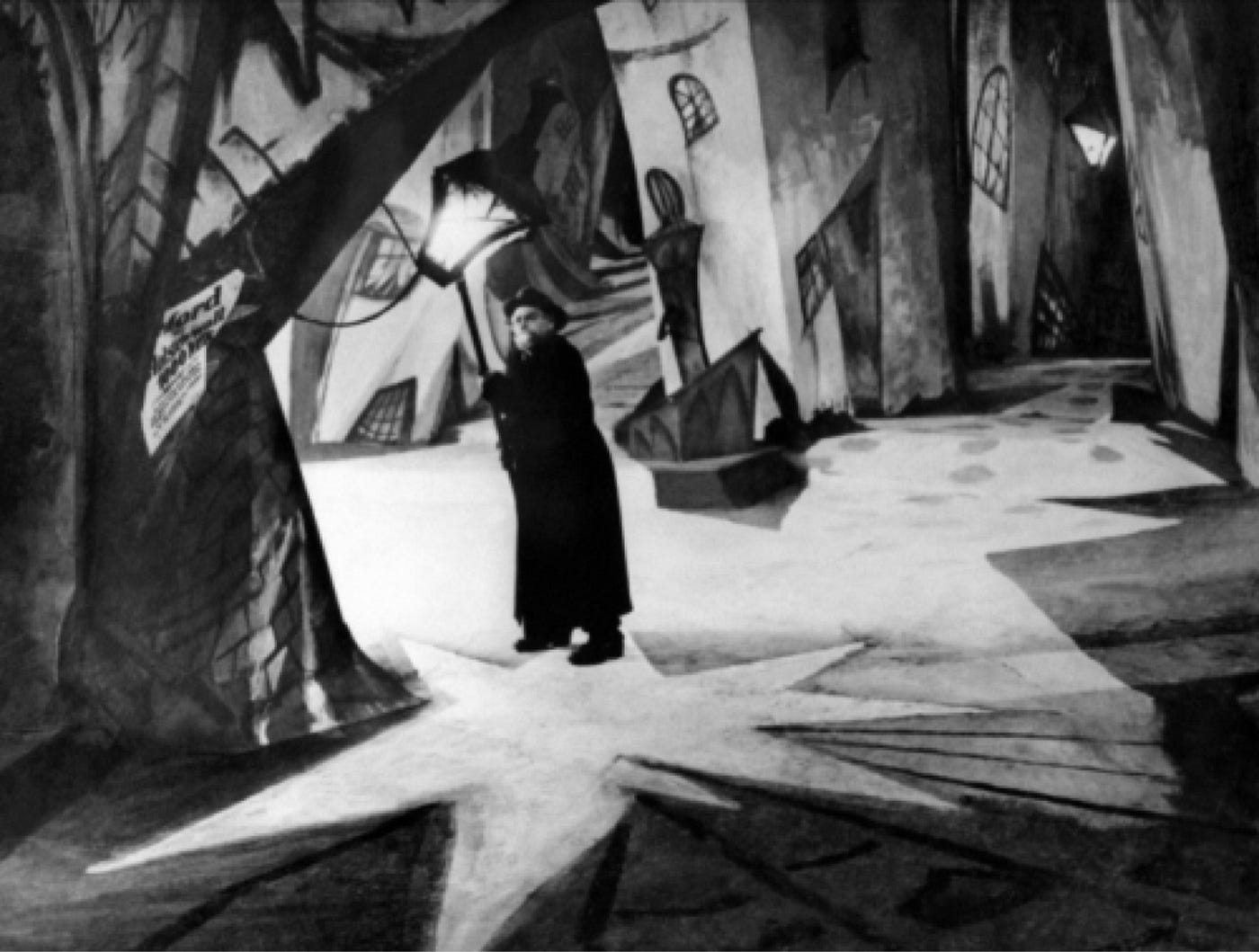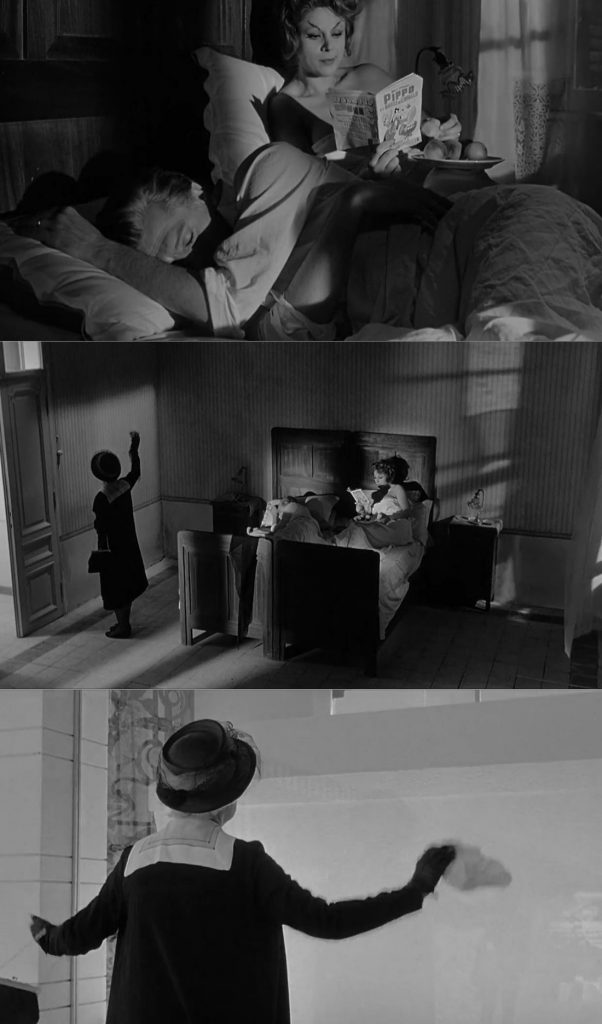Disequilibrium.
The word that will serve as a common thread in (the world of) this year’s Scambi Festival is disequilibrium. It will be the theme for the second edition of the Festival and, therefore, for the second edition of Dissolvenze: i corti Scambi, the short film contest that incorporates the works of a multitude of artists from Italy and from the rest of the world. All contestants will be able to play around with the meaning of disequilibrium, deconstructing its different definitions and turning it into refined and creative artworks, letting themselves be guided by what *disequilibrium *was and is in cinema.
The most common definition of the term disequilibrium is “lack of balance”, “the state of being out of equilibrium”.
Now, whether it is about a power imbalance as shown in *The Silence of the Lambs (1991), or an disequilibrium between two extreme and opposite ideologies like in BlackKklansman (2018), or yet again a mental derangement like in Psycho (1960), or even a time disequilibrium like in the more recent Tenet (2020), it doesn’t really matter to us.
In this article we won’t be focusing on the meaning of the term. Rather, we have chosen to analyse some technical components of film language that throughout the history of cinema have helped to convey some kind of disequilibrium to the viewers.
The first ever techniques employed to communicate a sense of disequilibrium date back to the early days of cinema history, during the avant-garde years of German Expressionism.
To meet the demands of movies with mysterious and distorted plots, the directors of the first decades of the 1900s experimented with the angle of the camera in order to create new kinds of shots. Sure enough, we trace back to this time the origin of the Dutch tilt, which can be obtained by tilting the camera until a maximum of 45°: by altering the balance of the frontal shot that the viewer is used to, we can elicit a sense of uneasiness, of disequilibrium.

In an age in which film-making still borrowed a lot from theatre, the painted backdrops often needed to reflect the same dizzy and surreal *disequilibrium *of the scripts. To realize the backdrops for The Cabinet of Dr. Caligari (1920), a film centred around the difficult distinction between reality and hallucination, director Robert Wiene contacted two expressionist painters, Reimann and Röhrig; they took inspiration from the artworks of Kirchner and crafted a crooked and deformed town, which was strongly reminiscent of Germany’s economic, social and political instability.

Later, film-makers moved on to experimenting with different ways to stitch scenes together.
Editing is a film element that traditionally tends to be transparent, to go unnoticed, to submit to the story in order to make narration as clear and immediate as possible.
Despite this, just as analysed by early soviet theoreticians, editing can play a more dominant role and become a proper means of expression.
Specifically, to convey the concept of disequilibrium, editors often disregard the rules of the classical Hollywood style in favour of a more non-continuous type of editing.
This is the case for Memento (2000) by Christopher Nolan, in which the main character is affected by a memory disorder and struggles to track down the culprit of a murder. The sequences of the film are edited in non-chronological order, which reflects the fragmented memory of the protagonist: thus, the viewer shares the character’s lack of balance, his sense of disorientation as he desperately tries to remember something that has been long forgotten.
To communicate disequilibrium, however, it’s not strictly necessary to resort to such a noticeable editing style; it is also possible to make a more subtle use of it, as is the case for Federico Fellini’s well-known 8½ (1963). In this masterpiece of metacinema, reality often blends in with the dreams of the protagonist. To blur the border between sequences, Fellini inserts an element of the dream into the real setting and uses it to pivot seamlessly to the following scene. The viewer feels this disequilibrium between the real and the dreamlike hand in hand with the main character, constantly gliding with him through real life and dream.

In relation to elements that go unnoticed but that are actually of paramount importance, “sound”, as famous director David Lynch claims, “constitutes at least 50% of the cinematic experience” and that “for some scenes it is almost 100%”,
Indeed, altering the intensity level of the sound effects of a scene is one of the most effective ways to catapult the viewer from one emotional state to another.
In a particular scene from Nightcrawler (2014) by Dan Gilroy, the sound becomes more and more intense as the protagonist observes a stringer recording the dramatic aftermath of a car crash; the soundtrack, the police sirens, the roar rumble of a plane… everything builds and builds as the idea of becoming a stringer swallows up the mind of the protagonist. The disequilibrium of the scene is thus presented through a game of contrasts between the deafening chaos of the outside world and the inner focus of the main character.
In contrast, in Darius Marder’s drama Sound of Metal (2019), the disequilibrium is given by the sudden and near-total deafness that affects the protagonist, created through a muffled sound design and permeated by a low humming, which clashes with the roar of the drums to which both the main character and the viewer were accustomed to in the first minutes of the movie.
In the more specific area of soundtrack, even a single song can take the center stage can be crucial in representing disequilibrium within a film.
In Silver Linings Playbook (2012) by David O. Russell, the protagonist’s angry outbursts are triggered by his wedding song, My Cherie Amour by Stevie Wonder; this melody becomes consequently associated with a sense of disequilibrium that manifests itself in the protagonist whenever we hear that song.
Similarly, the soundtrack can also anticipate the feeling of disequilibrium.
In the thriller Inception (2010), the characters conceived by Christopher Nolan operate within people’s dreams and use the song Non, je ne regrette rien by Edith Piaf to communicate with each other the exact moment of awakening: to the viewer, throughout the film this song takes on the meaning of a warning that precedes the collapse of the dream’s structure, the beginning of the disequilibrium.
Moving on to cinematography and the analysis of lights and colors, we can notice that the choice of the palette is always of utter importance. Indeed, **colour **is one of films’ most exploited elements to suggest certain moods to the viewer.
One of the most popular ways in which cinematographers represent disequilibrium is to assign specific colors to the characters, so that their presence (or absence) will be immediately noticeable.
In Vertigo (1958), a thriller which is also famous for the first ever use of the vertigo effect, pioneered by Alfred Hitchcock, the two main characters are assigned specific colors: red for him, green for her. These two shades belong exclusively to them: when the two characters are not on the screen, neither are their colors; this instills a mild yet clear sense of disorientation in the viewer.
A feeling of disequilibrium tied to the use of color can also concern the entire film and completely engulf the fictional world.
In the cult movie The Matrix (1999) born from the minds of directors and screenwriters Lana and Lilly Wachowsky, the sequences set within the virtual world are soaked in a green tint, the same tint that shines on the screens of the old computers we see throughout the film. This tiny detail acts as an ulterior hint for the viewer to be able to differentiate between reality and the Matrix.

Another strategy to throw off the perception of the viewer when it comes to cinematography is to rely on color grading, the digital correction of the film’s colors.
In the movie O Brother, Where Art Thou? (2000) by the Coen Brothers, the typically lush nature of Mississippi is intentionally devoid of its original color: the grass, the trees and the bushes take on brown and dusty tones, in such an abnormal way that it immediately stikes the eye of the viewer.
Lastly, following more expressionist tendencies, it can be the very notion of colour that becomes synonymous with disequilibrium, as it happens in Pleasantville (1998) by Gary Ross: the two protagonists bring along with them the color, the freedom, the disequilibrium that turns upside-down the black-and-white world in which they are thrown.

We have analyzed different ways in which the theme for this year’s edition of Scambi has been interpreted throughout the history of cinema, but now it is your turn to let the disequilibrium guide you through the creation of your artwork!
The deadline to submit your short film is June 5th 2022 on FilmFreeway or through the form on our website. We will accept short films in Italian as well as any other language, which is why we created two separate categories. For more information visit the page dedicated to Dissolvenze on our website.
We can’t wait to see your masterpieces!